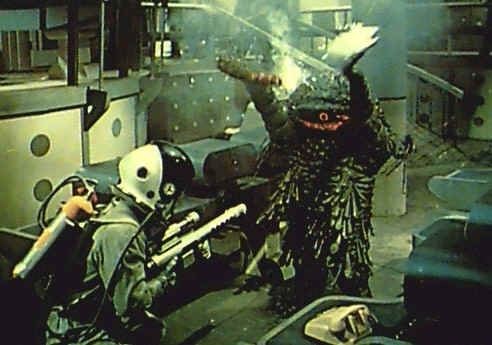
Posted on 11/23/2018 6:45:02 PM PST by BenLurkin
Scientists have discovered a thriving ecosystem of ‘infectious organisms’ aboard the International Space Station.
A Nasa team found five different varieties of Enterobacter, which are similar to bugs found in hospitals down here on Earth. The toilet of the orbiting space base was one of the main sites of infection along with the exercise area.
Researchers calculated that there is a ‘79% probability that they may potentially cause disease’, although analysis has only been carried out on dead samples at this stage so this risk could prove to be higher or lower following further research.
Dr Nitin Singh, who has just published a report on the bugs, said: ‘Given the multi-drug resistance results for these [bacteria] and the increased chance of pathogenicity we have identified, these species potentially pose important health considerations for future missions.’
Luckily, the tiny organisms do not appear to be virulent enough to make humans ill at this stage, although they could evolve into a more dangerous form.
(Excerpt) Read more at metro.co.uk ...
Seems like the only way to get rid of this thing and all the pestilence on board is to change its trajectory and let it burn up during reentry.
A 79% probability that they MAY POSSIBLY cause disease?
Wtf does that mean? How do you put a number on that?
Keep them in space. Better yet, nuke them.
A few weeks after Mir came down, “something” washed ashore on a NZ beach....

We’ve seen this movie.
“Cryptosporidia species are highly resistant to bleach,..”
True, but I was referring to bacteria. Cryptosporidium is a parasite.
I thought they were called “astronauts”...
A thought occurred... Get everyone off and vent the whole thing to space. Then re-pressurize after a sufficiently long enough time to kill off the bacteria. (Assuming vacuum will kill these buggers)
Astronaut Chris Hadfield Debunks Space Myths | WIRED
The option to use bleach is not as simple as one may think. The Environmental Control and Life Support System (ECLSS, pronounced “eeclyss”) can easily be poisoned by various vapors. At least that is what the ECLSS people told me when I needed something onboard cleaned with alcohol (methyl or ethyl).
The NappyOne

It isn't a closed system, the ISS is in constant contact with things from Earth. Every flight to the ISS contains bacteria, spores, etc., that we don't even know about or control. Our own bodies are colonies of species of bacteria. We also have shipped plants and animals up there in experiments and for food, which can also carry bacteria.
How to clean a space station might be the most important thing we learn at the ISS.
There are a few things to use:
- As another poster said, coating surfaces with silver would help.
- Bathing modules in UV light would help.
- Ammonia or bleach, followed by venting and replacing a module's atmosphere might help.
- Abandoning the ISS temporarily to send it up above the radiation protection of Earth and let it get bathed in radiation might help.
- Bring along the natural predators of the bacteria to keep it in check. (Design your space station as a terrarium, not a sterile laboratory. Accept that living things will be there not under your complete control.) Only keep laboratory modules sterile.
Any technique would not work on every bacteria, as many species can live in extreme environments.
82.35% of all statistics are made up on the spot.
“It’s not a closed system. They have the vacuum of space for removal.”
Enterobacter are facultative anaerobes which means they can grow with or without oxygen. The vacuum of space would likely kill them by dehydration.
“A 79% probability that they MAY POSSIBLY cause disease?”
Enterobacter are normal human gut bacteria and not generally harmful. I know of no meaningful way to determine a probability that something will cause disease accurate to 1 percent. Its silly.
“The option to use bleach is not as simple as one may think.”
Bleach is also corrosive and could damage electronics. The fact is any environment where humans live is teeming with bacteria. You can clean and disinfect to a certain degree but you cannot keep it sterile, nor is there a reason to.
Nuke it from the surface. It’s the only way to be sure.
Imagine. 11 people on board. one bathroom and everyone has diarrhea. Might get messy. I guess they need to build an outhouse.
Disclaimer: Opinions posted on Free Republic are those of the individual posters and do not necessarily represent the opinion of Free Republic or its management. All materials posted herein are protected by copyright law and the exemption for fair use of copyrighted works.